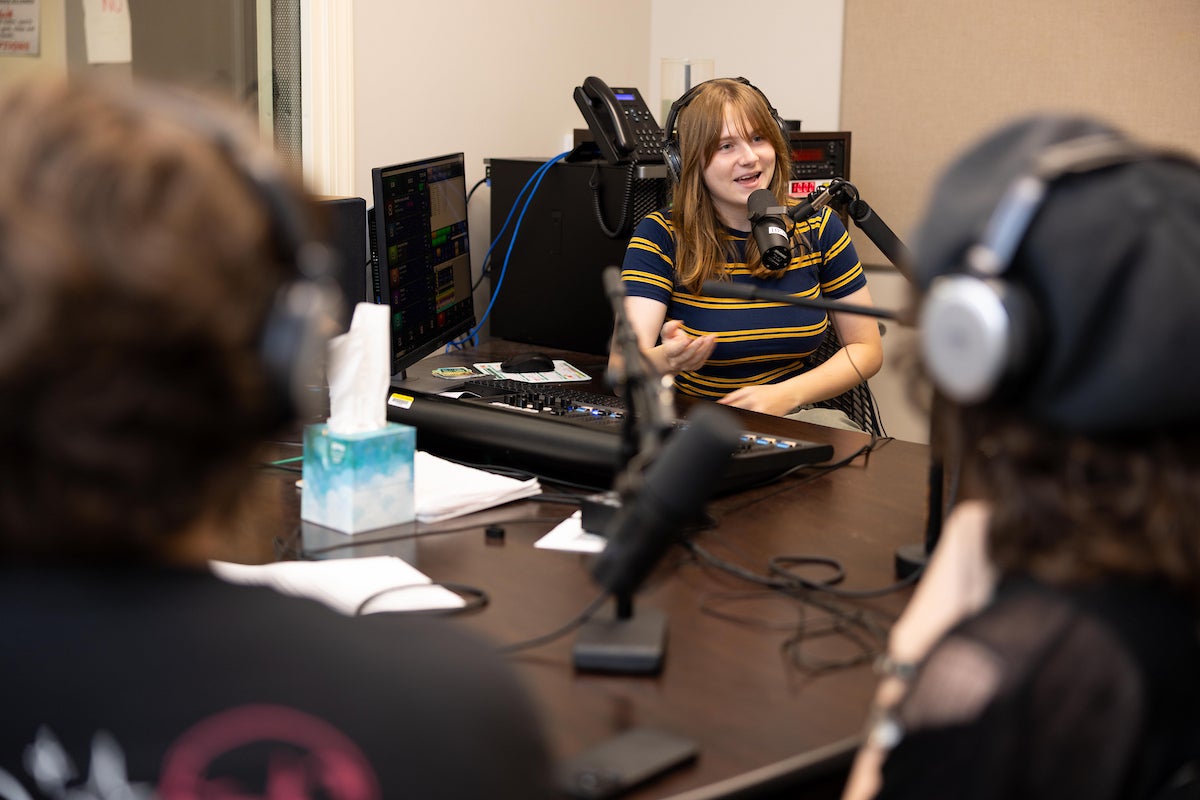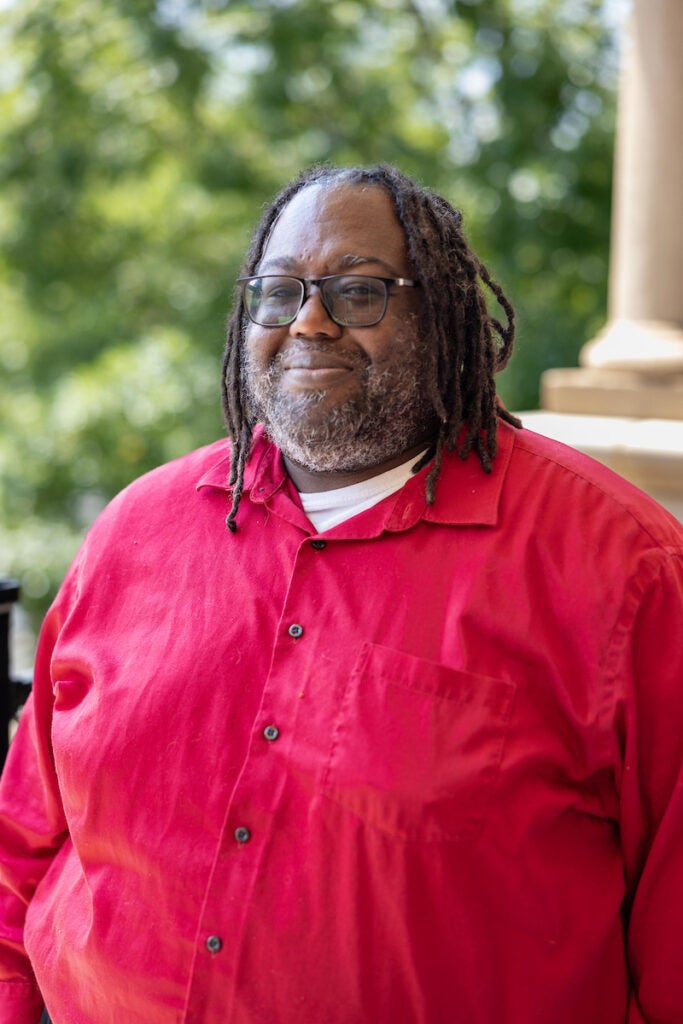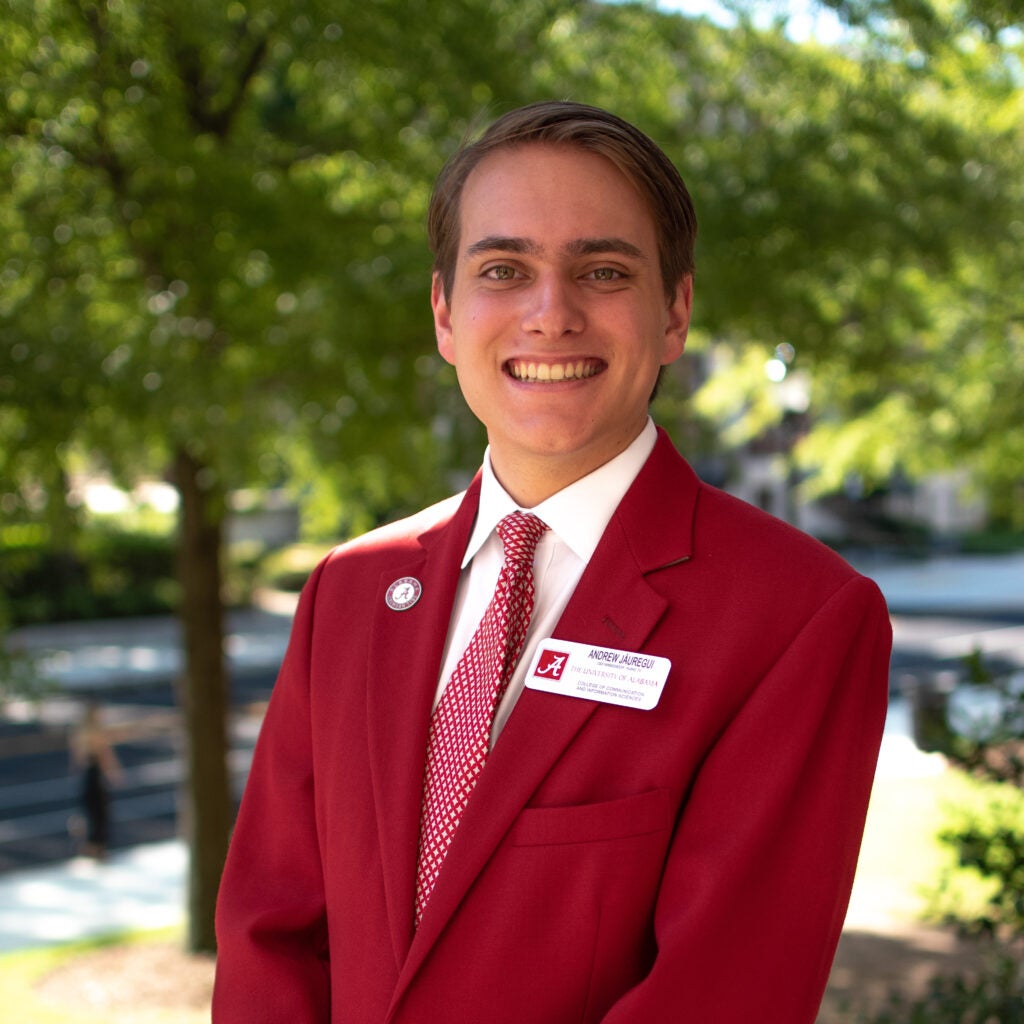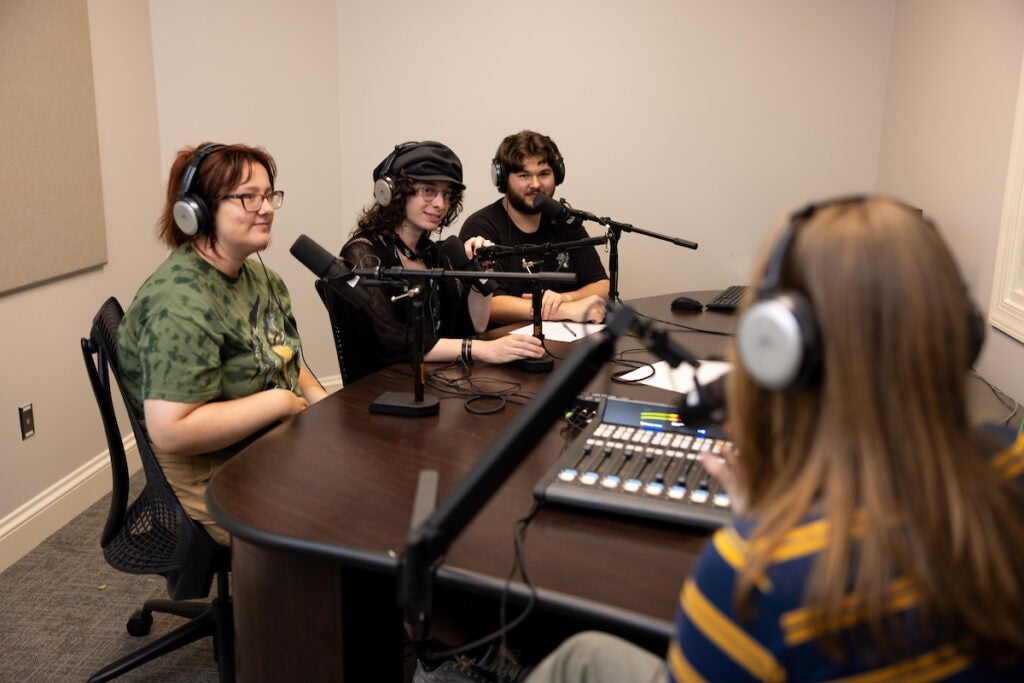WVUA 90.7: “It’s Their Station”
“We have a radio station?”
Every year, WVUA 90.7 “The Capstone” General Manager and Broadcast Advisor Terry Siggers gets this question from a student, often even a junior or a senior. The student tends to be even more surprised to learn that the station is run by fellow students.
Still, the question is understandable. Until last year, the station headquarters were on the Bryce property, not exactly the heart of campus. Now that the station has a new home, in the Riverside Commons, the greater visibility is a boon for recruiting.
Rising junior Andrew Jáuregui has been program director at WVUA since fall 2024. He points out to prospective student employees that the radio can be a medium for their own self-expression.
“When people come by, we talk about how there are deejays, but also specialty shows that can be an avenue for you to talk about your interests, even if those interests aren’t music-related,” he said.

But for rising senior and Station Manager Kathryn Rachford, it’s all about the music.
“I always pitch it as, if you love music, this is a great way to find new music and meet people who are also big music people,” she said. “So I love to pitch it as an opportunity to be a live deejay and get your voice on the air and have everyone who tunes in, in the city, listen to you.”
These are not empty promises, either. Terry Siggers works to create a culture of ownership within the student workforce at the radio station, where student employees are empowered to make real choices about the station’s direction. In fact, Siggers developed a voting system where he sits down with the station manager (Rachford) and the program director (Jáuregui) to hear student pitches for specialty programming. Two confirming votes mean the program is greenlit.
Meanwhile, Siggers serves as a mentor and sounding board, performs light engineering work, and helps ensure that the station stays in compliance with broadcast laws.
“I tell my students every year, at the beginning of the year, that it’s their station,” he said.
92.5 FM: A 21st Century Radio Station for Timely Updates

Brandon Hollingsworth, the voice of 92.5 FM UA Info Radio, the campus information station at UA, remembers his experiences as a student worker at a small community college radio station.
“You have a big mixing board in front of you where you’re trying to manipulate it and talk at the same time, and make sure that all those elements come out correctly,” Hollingsworth recalled. “As a student, sometimes I hit the wrong button, or I did it at the wrong time, or I ran over – we call it ‘blowing the post’ when you run over or you run short. Because all of it had to be highly regimented.”
Yet even in the highly regimented space of radio, things go wrong. Hollingsworth recounted a time in Spokane, during NPR’s Morning Edition, when the signal suddenly cut out, leaving nothing but dreaded “dead air.” Thinking quickly, he put on a CD of classical music, continuing to talk with the audience at intervals, improvising, acknowledging the problem while making it work. Later, listeners complimented his ability to adapt: “I’ve never heard dead air be interesting.”
And that ability to make things interesting serves him well in his role at 92.5 FM. The idea for the station emerged after the 2011 Tuscaloosa tornado that downed most forms of local public address, including the internet, and even resulted in a two-day power outage. Now, the radio station broadcasts campus safety and weather information 24 hours a day, ensuring that the people of UA and the surrounding areas are well-informed and prepared the next time a disaster strikes.
“We still need to be a 21st century radio station, that means being responsive, having a short turnaround,” Hollingsworth said. “If you wait a month to tell them, it’s already old news.”
APR: Bringing Together Music and National and Local News

Alabama Public Radio Program Director and Content Manager Brittany Young is a writer by passion, a journalist by training and an administrator by necessity.
“I think the PD wears a lot of hats where you have to communicate with the news people, salespeople, IT, engineering,” she said. “I have to work with everybody.”
And “everybody” includes students. Part of the College of Communication and Information Sciences, the station benefits from content produced by UA interns. Additionally, Young helps administer Story Corps, a national initiative to collect stories of everyday people. She teaches students journalistic techniques through the process, helping them to find the most compelling pieces of the story and edit the story, which often begins as a 40-45 minute interview, down to about four minutes.
“The students, they’re listening to the conversations, editing the stories, getting voice work, learning how to write and edit,” Young said.
Alabama Public Radio, which is a network of Alabama stations with five transmitters across the state and a statewide affiliate of National Public Radio, is a dual-format station. That means they play music, especially classical, which is their “bread and butter,” as well as deliver national and local news and commentary.
A Changing Medium
There is no question that radio is changing. People are listening to radio on the internet, now, or through an app on their phone, as much as they might be listening through the traditional airwaves.
“I think radio stations have learned to be multimedia stations,” Hollingsworth explained. “Sixty years ago, a newspaper was just a newspaper because it had to be. Today, a newspaper must also be a website and a video thing, and they’re mounting live streams and live news events. It’s more of a broad-based newsroom than it could have been before. And radio has had to learn to be the same thing.”

Additionally, Siggers has noticed that it seems more common for students to arrive with ideas for podcasts than a strong desire to host traditional radio programs. And the station doesn’t fight it. It hosts a wide assortment of student-driven podcasts on its website.
Building Community On-Air
But a fundamental strength of radio remains, despite the relentless march of progress: Radio builds community. To augment the weather and safety information on 92.5 FM, Hollingsworth has launched Capstone Conversations, a series of five to seven-minute interviews with interesting people around campus, like Michael Pearce from Gorgas Library and Carolina Robinson, executive director of UA’s Education Abroad. He has also started partnering with other writers at UA to produce radio versions of feature stories.
For their part, Alabama Public Radio, under Brittany Young’s leadership, is focusing on local news content. Quick-Fire Quips, for instance, hosted by Digital News Content Coordinator Baillee Majors, focuses on highlighting Alabama people who “stand out in the state.” Young’s own Sports Minded podcast hosts guests who are either from Alabama and the Southeast or have worked as coaches, journalists, trainers, officials, or former athletes in the state or southern region. And APR Notebook, hosted by News Director Pat Duggins, also focuses on Alabama topics of interest, like the recent national award-winning, eight-month exploration of Alabama’s new U.S. House seat in the rural Black Belt region, or the glory of Alabama white barbecue sauce.

Andrew Jáuregui admits that the experience of student radio workers, often in individual, soundproofed rooms, can be a little isolating, so he stresses connection and community through meetings and get-togethers.
“Because student media, especially here, has a really great culture,” he said.
“I feel like it’s easy for us to get weighed down with the day-to-day tasks of what we have to do to keep the station running,” Kathryn Rachford agreed. “But as station manager, I want to take my extra time to be able to plan events and get-togethers or even hosting live bands, just things that can bring people in and reunite us.”
Celebrating Radio at UA
Radio is literally in the air at The University of Alabama. It’s a story about Alabama Museum of Natural History expeditions hunting fossil shark teeth, complete with background chatter and sounds of a babbling brook. It’s a thoughtful look at politics in the Black Belt Region. It’s an update about an ongoing local heat wave. It’s a new track by an indie pop artist, complete with an incisive review. It’s on your phone, in your internet browser, in the background at your office or workshop, and coming through the speakers of your car.
It’s the oldest form of broadcast media, alive and active at the Capstone and changing all the time.
And it isn’t going anywhere.
